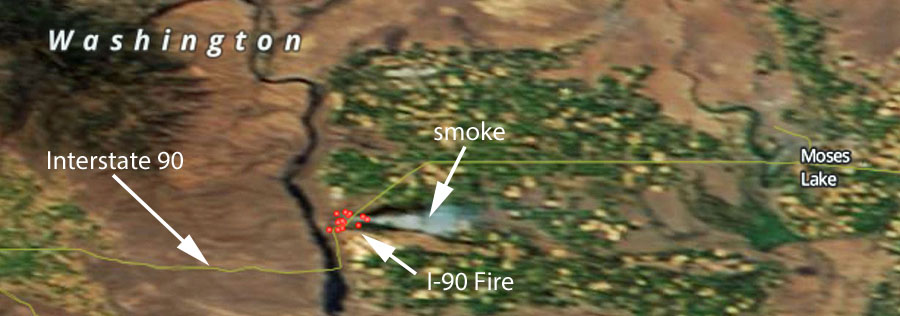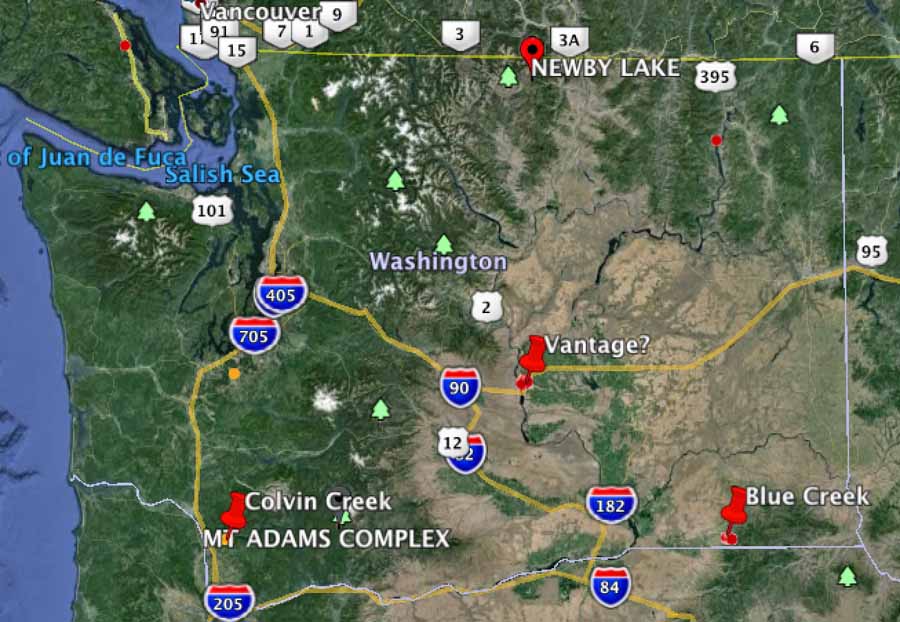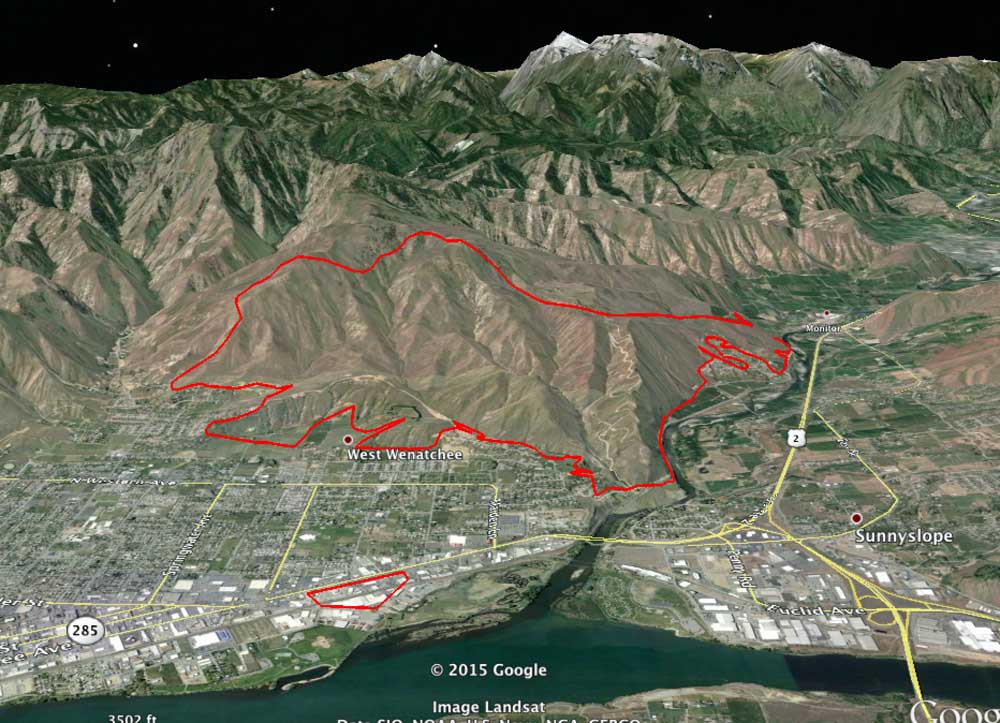(UPDATED at 5:34 p.m. PT, July 21, 2015)
Today much of the eastern part of Washington is again under a Red Flag Warning until 8 p.m. for westerly winds of 15 to 25 mph and a relative humidity of 10 to 20 percent.
I-90 Fire between Vantage and George

We have seen this referred to as the “I-90 Fire” today. It has burned about 900 acres and has a state Type 3 incident management team assigned. Interstate 90 has been subject to intermittent closures and at 7 a.m. on Tuesday was closed.
Blue Creek Fire
UPDATE at 5:34 p.m. PT, July 21, 2015:
The Blue Creek Fire has grown to 4,000 acres, the Union-Bulletin reports, and has destroyed one residence on Klicker Mountain Road and seven outbuildings near the intersection of Klicker Mountain Road and Blue Creek Road. More areas are threatened including the Bluewood Ski area and the Mill Creek Watershed.
The Union-Bulletin has a gallery of excellent photos of the fire.
****
A helicopter working on the Blue Creek Fire 10 miles east of Walla Walla, Washington, had a mechanical failure while in flight Monday evening, according to the Union-Bulletin which quoted Heather Lee of Walla Walla County Emergency Management. The pilot autorotated the helicopter and walked away from the incident. He refused to be transported to an hospital, Ms. Lee said. Fire Aviation has more information about the helicopter incident.

The fire has grown to 2,500 acres due to extreme fire behavior and long-range spotting. Very little information is being provided by the Washington DNR, but they reported that 32 engines and 3 helicopters are assigned, and eight structures have burned . Evacuations and road closures are in effect.
Colvin Creek Fire, now part of the PC Complex of five fires
A Type 2 incident management team (Leitch/Holloway) is assigned to this complex which has burned 100 acres. Very little information is being provided about this complex of fires.
****
(Originally published at 4:43 p.m. PT, July 20, 2015)
Three new fires have erupted in Washington recently. Much of the state is under a Red Flag Warning on Monday.
Fire between Vantage and George
On Sunday a fire between Vantage and George required the closure of Interstate 90. Later in the day it reopened, but on Monday the fire awakened, or it may be a new ignition in the same area — reports are unclear at this point. But the Interstate is again closed between mileposts 138 and 149 and approximately 50 structures are being evacuated.
KOHO radio reports it has burned 700 to 800 acres.
Developments on fire near Vantage, both directions of I-90 are closed – http://t.co/3PVTPHCasI Photos: lmlinn pic.twitter.com/UyyrxundRw
— KING 5 News (@KING5Seattle) July 20, 2015
Blue Creek Fire
The Blue Creek fire is causing evacuations along Blue Creek Road 10 miles east of Walla Walla. Monday afternoon the Blue Mountain Interagency Dispatch Agency Center said it had burned at least one structure and about 350 acres of vegetation. Several air tankers were working the fire Monday afternoon.
You can listen to some of the radio traffic at an online scanner.
Colvin Creek
Monday morning the reported size of the Colvin Creek Fire was 70 acres, and a Type 2 Incident Management Team, WA Team 5 (Leitch/Holloway), was responding. The fire is 11 miles southeast of Kalama.


